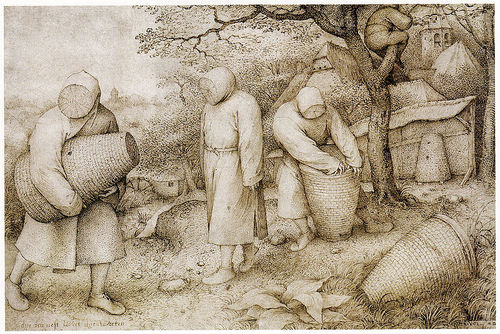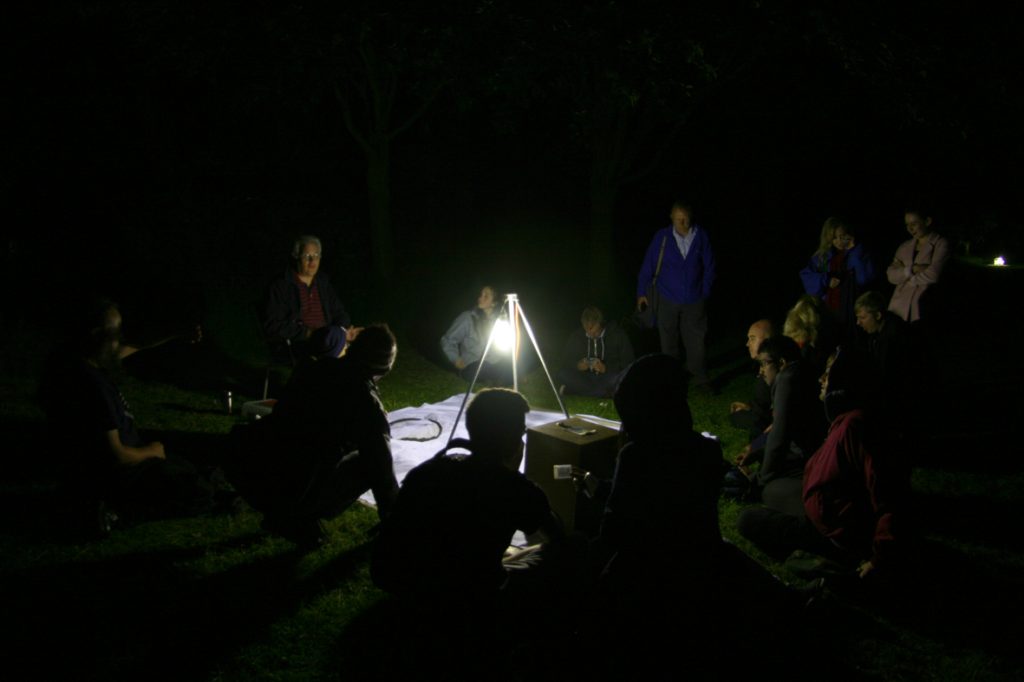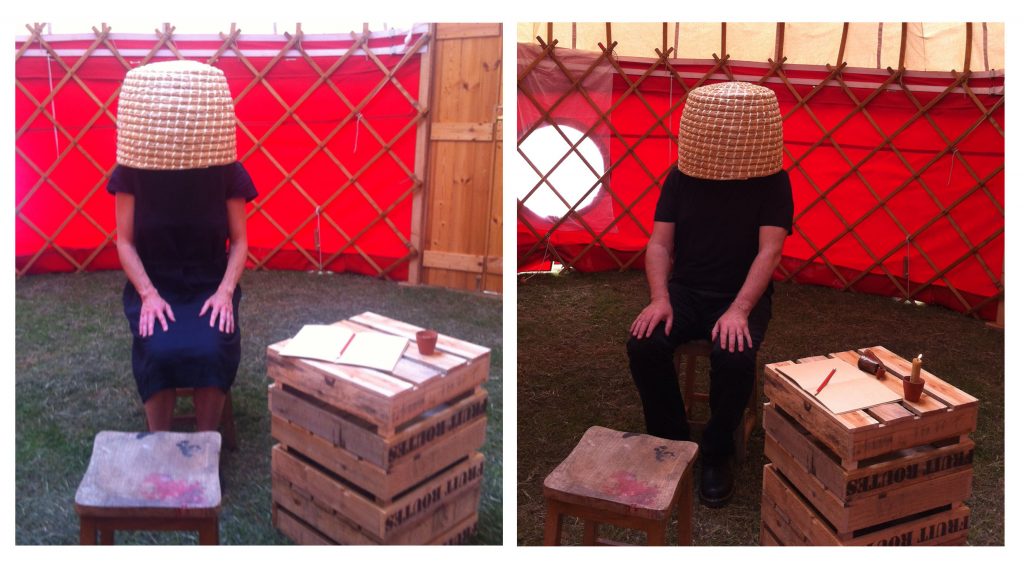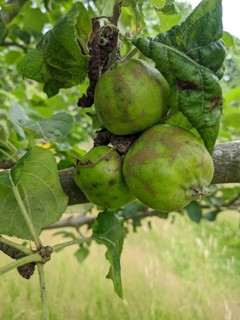
An afternoon of visits to the Campus apiary, beeswax candle making, learning bee flower scents & wild teas flavoured with Loughborough ‘gold’ honey. Hive Mind Skep was a one to one performance created at the event by Anne-Marie Culhane & Paul Conneally to create space for reflection on the intertwining of the human and bee worlds + the future of this keystone species (see below). At 6pm a group of us walked the route. I’m still astounded by the flourishing apricot (around 150 ripening fruit) & verdant quince on the Physics building and would recommend anyone to cover their South facing walls in espaliers!


I’m still in love with the poetic names given to these overlooked pollinators and creatures of the night. What I saw:
Small dusty wave, common marbled carpet, light brown apple moth, hart & dart, figure of 80, mottled rustic, middle barred minor, mottled pug, may high flyer, brimstone moth, small fanfoot, flame shoulder, barred fruit tree tortrix, elephant hawk moth, uncertain, straw dot, garden carpet, snout, yellow underwing, flame.
With thanks to Graham & Adrian. Full species list to come.

Hive Mind SKEP
We share our lives with and our very existence depends on the bees – a keystone species in the natural world.
Building on the tradition of Telling the Bees, where beekeepers informed the bees of significant events in their communities or lives, you are invited to share something of your personal thoughts on community, cooperation and the future of our relationship with the ecological community (animals, insects, plants).
Speak out loud
Share your thoughts in silence
Write in the book
With thanks to Paul Conneally & Amy Shelton for birthing this idea with me.

Skeps, which are baskets placed open-end-down, have been used for about 2000 years. Initially they were made from wicker plastered with mud and dung but from the Middle Ages they were made of straw. In northern and western Europe, skeps were made of coils of grass or straw. In its simplest form, there is a single entrance at the bottom of the skep. Again, there is no internal structure provided for the bees and the colony must produce its own honeycomb, which is attached to the inside of the skep. https://en.wikipedia.org/wiki/Beehive
For centuries, beekeepers have used “skeps,” carefully designed domed baskets, to house their hives. Bees need a clean, dry place to make a home and “I guess beekeepers got tired of using hollowed out logs,” explains Kennard in a softly accented but very British voice. Northern European beekeepers migrated from logs to straw skeps somewhere between 800 and 1200 AD. Bridal couples in medieval Holland were given a skep to parade around the village as a symbol of starting a new home, and a swarm of bees as a wedding gift. But, once the modern Langsroth box hive was perfected and came into common use, bee skeps fell out of fashion. http://modernfarmer.com/2013/05/how-to-build-a-bee-skep/
The Skep we used for our performance is still used at Loughborough to catch swarms and return them to the hive.


